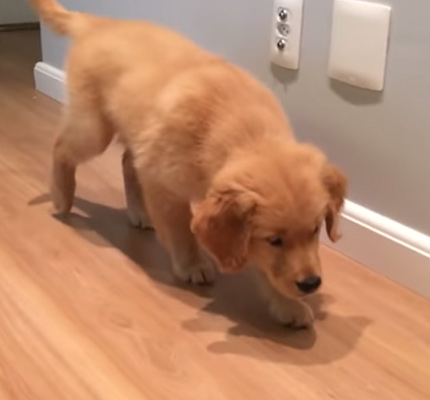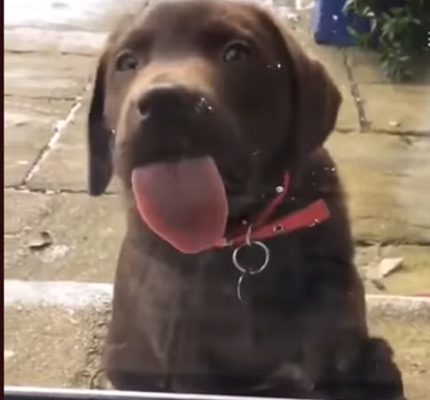Puppies are fragile and cute creatures that you can’t help but love. Learning how to house train a puppy is the best approach you can use to ensure its best behavior when it inevitably grows up. You want it to have some degree of discipline and control so that it doesn’t become a burden instead. For the training to be practical, it will have to be based on patience, consistency, and positive reinforcement. The objective is to instill good behaviors and improve their manners. What’s more, it’s a rewarding and fun way for both of you to spend quality time, which really solidifies your bond.

According to WebMD, It usually takes about 4-6 months for the puppy to be deemed house trained, but others can take up to a year. And size is typically a factor. For example, smaller breed types have high metabolism rates and small bladder control, thus requiring frequent trips to the ‘bathroom’ or otherwise do it in your carpet or clean linens. Another predictor can be the pup’s previous living arrangements. In such a case, you’ll want to break some of these old habits and replace them with more desirable ones.
When you should start training a puppy
To get the puppy house ready, you’ll want to start a puppy training schedule early and make it regular. Between the ages of eight and 16 weeks, that’s when the puppy learns the most, so it’s never too early to start. Experts suggest that the best age to start puppy training classes are between the ages of 12 weeks and 16 weeks old. At that age, they have sufficient control over their bowel movements and bladder and can now learn to hold it.
Starting training classes is actually suitable for its overall development. Dogs love training – it’s an opportunity for them to earn rewards, start challenging their brains, and get loads of attention and praise. If you follow this puppy training guide, your pup will be house ready in no time!
How to house train a puppy: Tips on training a puppy

Starting down the path on how to house train a puppy should start the very first day they come home. You’ll begin by teaching them their name. Use the name every time cuddle with them, feed them, or play with them. It will recognize the name and start responding to it when called upon. Now you can use it for effective communication when you start house training classes. Some puppy training tricks include:
- Hand commands. This will help it understand the most basic commands and is just as easy as doing verbal commands. Dogs end to respond better when the voice command is paired with hand command. It’s better to introduce this at a very young age, which improves communication with the pet, which is an invaluable resource as it grows older. Keep the hand command simple and reinforce the behavior by rewarding it or treat once it responds to your hand signals. Make it a routine so that the pup picks up on the signals quickly.
- Puppy obedience training tips. There are basic obedience commands like stay or sit, that you just have to have a lid on. “stay”, “sit”, “come”, “down” and some of the basics. Obedience training is good since it will build a lasting love bond between you two, and in return, you’ll get a happy, well-trained dog. For effective training, you’ll have to keep the sessions short but done every day and, if possible, practiced in different places.
Potty training a puppy
It’s never too early to start potty training your puppy in the process pf learning how to house train a puppy. When a dog wants to go, you can see it circling, whining, barking, or scratching at the door; these are all signs he/she needs to eliminate. Let it outside immediately. Luckily, if you follow these useful tips for puppy potty training, they’ll never stray from that habit of only going to its designated potty area. Here are ways of potty training a stubborn puppy:
- Keep it on a strict feeding schedule then take away its meal in between.
- Take the puppy out to excrete in the morning when it wakes up then again every hour to thirty minutes. Ensure he has gone out at night after meals.
- Take it to the same spot every time to conduct business. Its own scent will induce it to go.
- Praise or give it a treat after eliminating it.
Potty training your puppy won’t always go to plan. Don’t be surprised if you step on urine or pile of poo. Also, don’t get angry because puppies are vulnerable at this age. Continue managing their potty training regime, which includes things like taking the pup out when he/she needs to go and rewarding them afterward.
Crate training a new puppy
Experts suggest that puppies need to be in a confined space like a crate and is the best way to train a puppy in the short term. Crate training a puppy at night is a great way to keep an eye on it to prevent any pee accidents overnight. Make it large and comfortable for the puppy. If you are in the workforce, here a guide to crate training a puppy while at work:
- Slowly ease in the puppy into the crate. You’ll have to make space a place of happiness, comfort, and relaxation. Put a pillow or blanket in the crate coupled with treats.
- Puppies love their feeding time, which is why you should make the crate the feeding area. Food is often associated with satisfaction and happiness, which is why you should connect that feeling to the crate.
- Teach it to stay. When the pup has already acclimated with the crate and can remain inside without panicking, you can begin conditioning it to stay.
- Leave your puppy and go to work.
It’s imperative to get your puppy house-ready so that it doesn’t fumble on the basics. During the training sessions, there are bound to be setbacks, so remember you should always be patient with them. Stick to the program with consistency, check back on Furry Friends Gear for more advice, and he/she will eventually learn and get a grasp of basic commands and your house rules.
